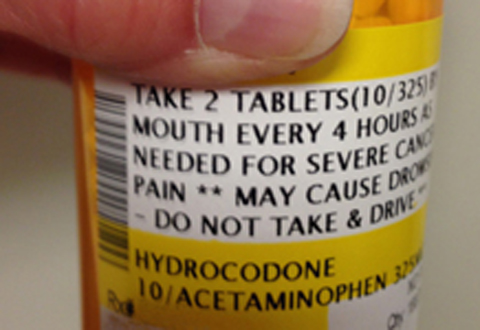Attention A T users. To access the menus on this page please perform the following steps.
1. Please switch auto forms mode to off.
2. Hit enter to expand a main menu option (Health, Benefits, etc).
3. To enter and activate the submenu links, hit the down arrow.
You will now be able to tab or arrow up or down through the submenu options to access/activate the submenu links.
Locator
Contact
Search
Mitigating risks of Opioid use

Almost 25% of VA patients receive an opioid medication from VA, and there is concern about opioid overuse, overdose, and other adverse events.
Friday, February 27, 2015
The number of opioid medications dispensed in the VA Healthcare System (VA) has more than doubled in the last decade. Almost 25% of VA patients receive an opioid medication from VA, and there is concern about opioid overuse, overdose, and other adverse events. VA has adopted several strategies to mitigate the risks of opioid-related adverse events, but these efforts focus almost entirely on monitoring prescriptions dispensed within VA. Walid Gellad, MD, MPH, CHERP Core Investigator, is leading a new project, funded by VA HSR&D, to include non-VA data sources and more accurately assess risks of opioid overuse among Veterans.More than 75% of Veterans have other forms of health insurance and can access healthcare and prescriptions in non-VA settings. Dual use of VA and non-VA health care and prescription benefits is likely to increase over time with the expansion of Medicaid and private insurance under the Affordable Care Act.
The importance of dual use is magnified for opioid medications, which have unique risks that may be amplified when care is fragmented. In partnership with VA Pharmacy Benefits Management, the VA Center for Medication Safety, and the VA National Pain Program Office, this study will address this critical knowledge gap by examining the extent of opioid prescribing from non-VA sources to enrolled Veterans and by examining the determinants and health consequences of this ‘dual use.’ This project will also interview primary care providers to understand how they identify and manage dual use of opioids by patients.
The study will provide VA with timely and valuable information critical to understanding patterns, influences, and outcomes associated with dual use of opioid medications and fill a crucial gap in evidence needed for development of optimal policy and clinical interventions to ensure the safe and appropriate use of opioids by Veterans.



















